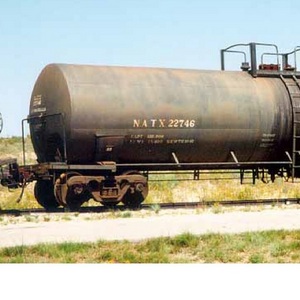Schumer calls for phase out or improvement of DOT-111 rail cars

Federal Railroad Administration
August 16, 2013
BY Erin Krueger
On Aug. 13 Sen. Charles Schumer, D-N.Y., issued a statement urging the U.S. Department of Transportation to require freight rail carriers to either create a plan to retrofit DOT-111 tank cars, or phase them out completely.
Title 49 of the Code of Federal Regulations includes specifications for DOT-111 rail cars. According to the regulation, DOT-111 rail cars are not pressurized. They must be circular in cross section, with formed heads designed convex outward. According to information published by the National Transportation Safety Board in 2012, 69 percent of all U.S. tank cars are DOT-111 designs. They are used to transport a wide variety of substances, including ethanol.
Advertisement
Advertisement
According to Schumer, the DOT-111 tank cars have been proven to be flawed, out-of-date, and have resulted in hazardous material spills during derailments. “I am urging the federal Department of Transportation to start phasing out older tank cars, particularly because they are thought to increase the damage that ensues after a derailment. The DOT-111 tank car has proven particularly prone to spills, tears and fires in the event of a derailment, and it’s simply unacceptable for New York’s communities along the rail lines to face that risk when we know thicker, tougher cars could keep us safer,” Schumer said.
According to information published by Schumer’s office, pressurized DOT-105 or DOT-112 cars have thicker shells and heads. Those designs are much less prone to breaching during derailment.
Advertisement
Advertisement
Schumer has also issued a letter to the Federal Railway Administration and Pipeline and Hazardous Materials Safety Administration, urging those organizations to take action. “The flaws in DOT-111 cars, which represent 69 [percent] of the national tank fleet carrying crude oil and ethanol, are well known and the NTSB has noted that ‘DOT-111 tank cars have a high incidence of tank failures during accidents,’” Schumer wrote in the letter. “We have known about these DOT-111 tank car flaws for a very long time, and the PHMSA and FRA must act on the NTSB’s March 2012 recommendations in order to prevent another derailment that could lead to another explosion or fire which could unnecessarily endanger lives and cause significant environmental damage.”
Related Stories
CoBank’s latest quarterly research report, released July 10, highlights current uncertainty around the implementation of three biofuel policies, RFS RVOs, small refinery exemptions (SREs) and the 45Z clean fuels production tax credit.
The U.S. Energy Information Administration maintained its forecast for 2025 and 2026 biodiesel, renewable diesel and sustainable aviation fuel (SAF) production in its latest Short-Term Energy Outlook, released July 8.
XCF Global Inc. on July 10 shared its strategic plan to invest close to $1 billion in developing a network of SAF production facilities, expanding its U.S. footprint, and advancing its international growth strategy.
U.S. fuel ethanol capacity fell slightly in April, while biodiesel and renewable diesel capacity held steady, according to data released by the U.S. EIA on June 30. Feedstock consumption was down when compared to the previous month.
XCF Global Inc. on July 8 provided a production update on its flagship New Rise Reno facility, underscoring that the plant has successfully produced SAF, renewable diesel, and renewable naphtha during its initial ramp-up.
Upcoming Events










